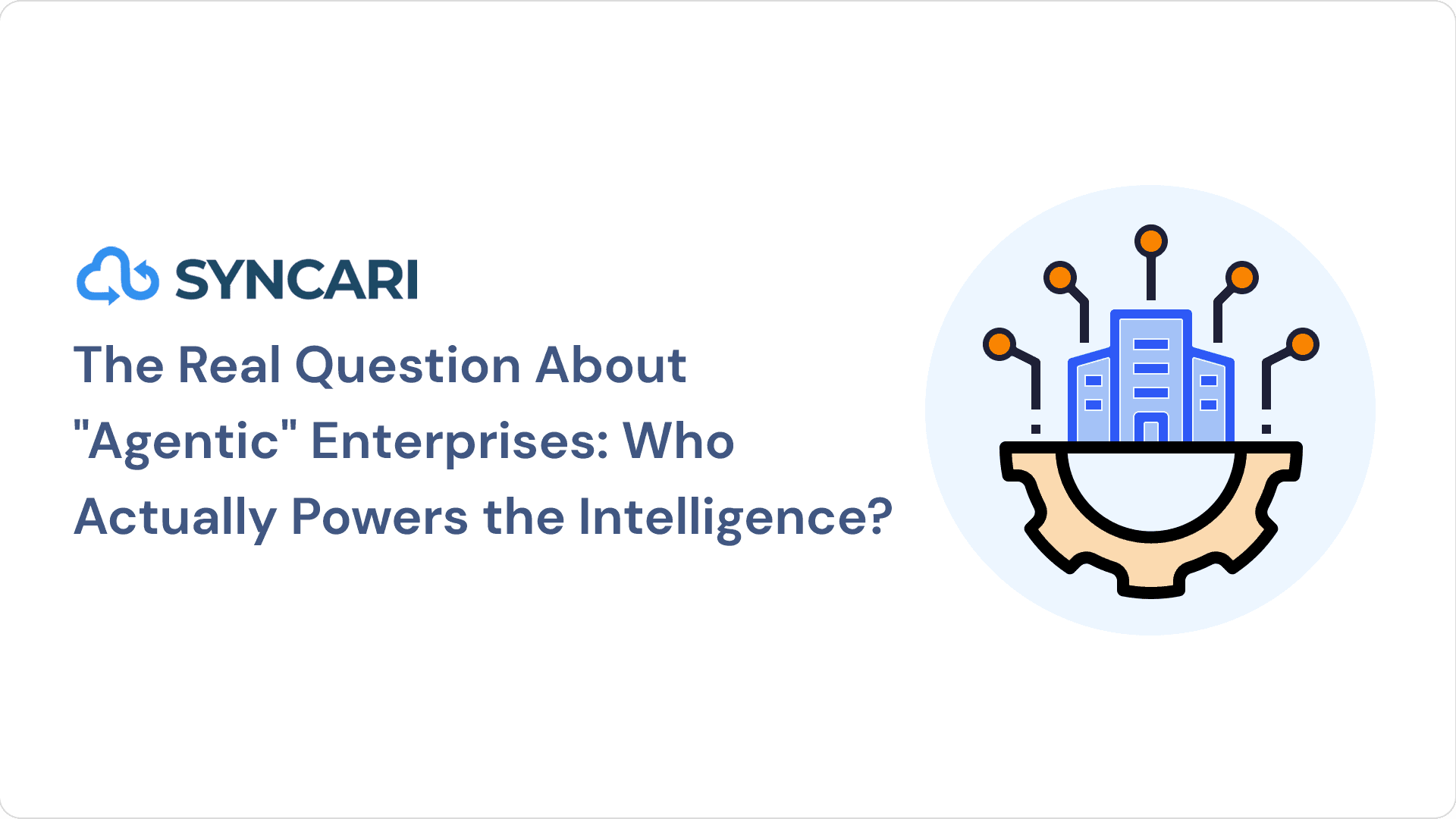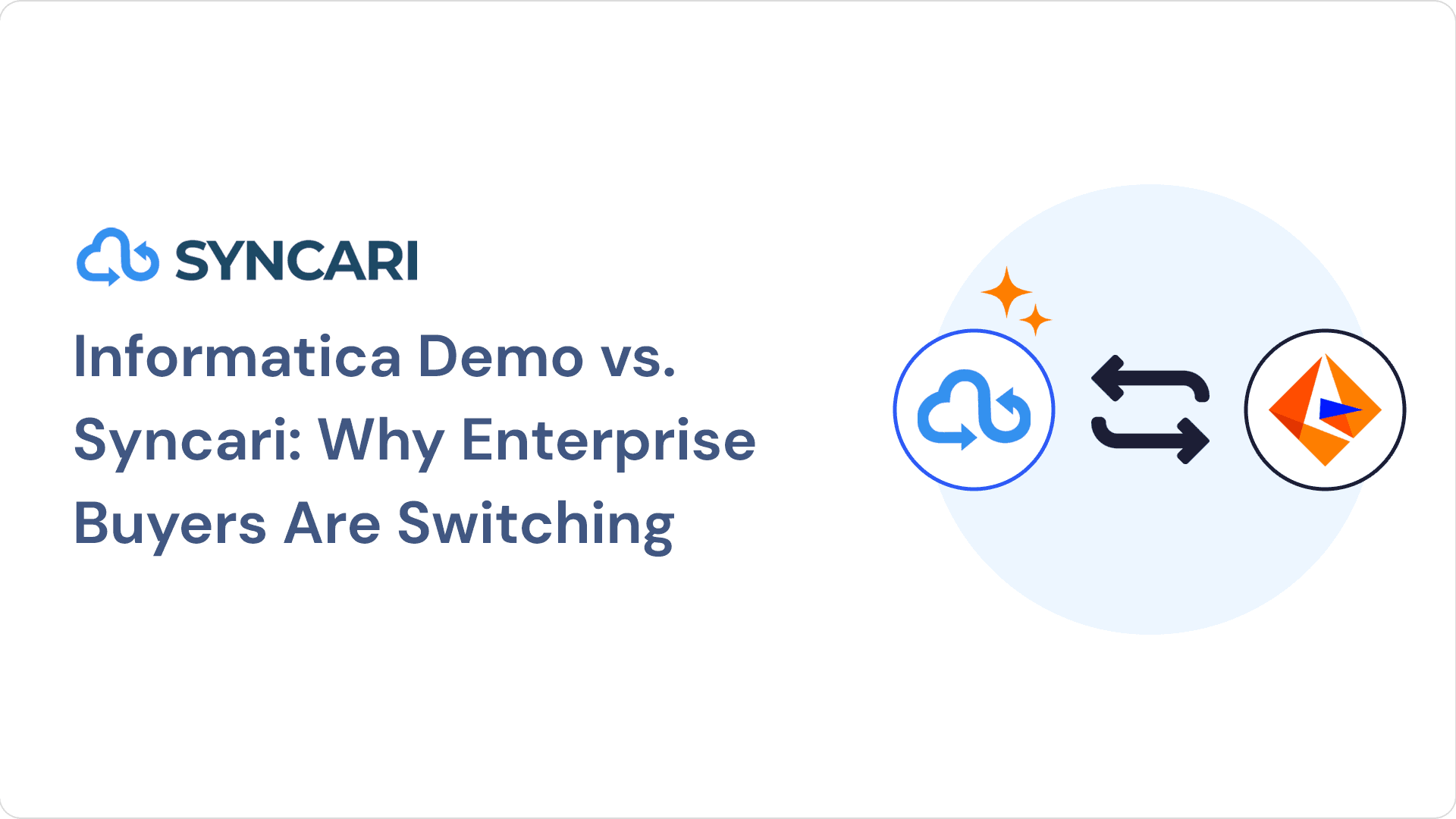Why Data Trust Is the New Executive KPI
Enterprises are in the middle of an AI gold rush. From copilots in sales to autonomous agents in operations, every business unit is testing ways to leverage artificial intelligence. Yet the hard truth is this: AI cannot succeed without trusted data.
For Chief Data Officers (CDOs) and Chief Information Officers (CIOs), trust is no longer just a governance aspiration—it’s a measurable KPI. Boards, regulators, and customers demand proof that enterprise AI runs on consistent, high-quality, governed data.
The challenge? Most enterprises lack visibility into the health of their data. Reports are fragmented across tools, insights arrive too late, and executives are left guessing about the integrity of the data fueling their AI initiatives.
That’s where data quality dashboards come in. With the Syncari Agentic Master Data Management™ (MDM) platform, leaders can monitor, measure, and scale trust across systems, transforming governance from a manual burden into a real-time strategic advantage.
Why Dashboards Are Essential for AI-Ready Data
Data quality rules, by themselves, are not enough. Enterprises often create hundreds of checks—validations, duplicate detection, conformity policies—but without measurement, they’re just policies sitting in silos.
Dashboards solve this by answering the questions executives care about:
- How healthy is our data across entities and systems?
- Are we improving or backsliding over time?
- Which business domains are driving risk?
- Can I prove governance ROI to the board?
For AI readiness, dashboards provide confidence that inputs to LLMs, copilots, and decision agents are consistent and reliable. They make trust visible—and actionable.
Syncari Insights Studio: Turning Governance into Real-Time Intelligence
Syncari’s Insights Studio was designed to make data quality measurable at enterprise scale. It goes beyond static reports to provide interactive, real-time dashboards that executives and stewards can rely on.
Key Dashboard Capabilities
- Current Score by Entity
- Provides a weighted health score for each entity (e.g., Accounts, Opportunities, Products).
- Executives can drill down to record-level detail, linking governance directly to business outcomes.
- Provides a weighted health score for each entity (e.g., Accounts, Opportunities, Products).
- Overall Score by Category
- Displays pass/fail counts grouped by category (Completeness, Conformity, Uniqueness, Validity).
- Helps identify systemic issues—e.g., marketing completeness vs. finance conformity.
- Displays pass/fail counts grouped by category (Completeness, Conformity, Uniqueness, Validity).
- Score Over Time
- Visualizes trends across entities or categories.
- Detects improvements after remediation or spikes from system changes.
- Visualizes trends across entities or categories.
- Built-In Drill-Downs
- From entity to record, category to rule, or trendline to daily variance.
- Ensures no executive insight stops at the surface.
- From entity to record, category to rule, or trendline to daily variance.
- Filtering & Time Windows
- Adjust dashboards by date, entity, category, or severity.
- Compare pre/post remediation outcomes in seconds.
- Adjust dashboards by date, entity, category, or severity.
Why Executives Love Dashboards
For CDOs and CIOs, dashboards translate technical data governance into business outcomes, a language that resonates in boardrooms.
- Visibility: Real-time health scores create transparency across systems and units.
- Accountability: Category-level ownership maps governance to business stewards.
- Proof of ROI: Trendlines show measurable improvements in data trust over time.
- Agility: Spikes in errors or declines in quality are flagged immediately, preventing downstream failures.
In short, dashboards give executives the levers to lead with data trust, not react to failures.
Case Example: Dashboards in Action
A global healthcare provider was preparing to launch AI-driven diagnostics across multiple business units. The CIO needed assurance that input data—from patient records to lab results—met compliance standards and governance thresholds.
Before Syncari:
- Each unit managed its own data quality reports in spreadsheets.
- The CIO had no single view of trust across domains.
- AI pilots stalled due to lack of confidence in inputs.
After Syncari Agentic MDM:
- Data quality dashboards in Insights Studio provided a unified view across entities and categories.
- Compliance stewards owned their category dashboards (e.g., Patient Record Completeness).
- The CIO monitored improvement trends over time, proving to the board that governance investments delivered ROI.
The result: AI diagnostics launched on schedule, with leadership confident in the trustworthiness of underlying data.
Best Practices for Monitoring and Measuring Data Quality
From Syncari’s experience with Fortune 1000 enterprises, here are proven practices for executives deploying dashboards:
- Start with critical entities. Focus on customer, product, or finance data first—areas where poor quality has the biggest impact.
- Map categories to owners. Assign Completeness to Marketing, Validity to Finance, Conformity to IT, etc. Accountability drives action.
- Monitor trends, not snapshots. Weekly or monthly trendlines reveal whether initiatives are working. Snapshots alone are misleading.
- Connect dashboards to initiatives. Tie quality scores to AI or digital transformation milestones (e.g., CRM migration, AI model deployment).
- Use dashboards as early-warning systems. Treat dips in quality as leading indicators of risk before they impact revenue or compliance.
Why Legacy Dashboards Fail Enterprises
Traditional MDM or iPaaS dashboards often disappoint executives:
- Too rigid: Fixed reporting views that don’t adapt to business needs.
- Too late: Data quality reported after-the-fact, not in real time.
- Too siloed: Dashboards tied to one system, not the enterprise data fabric.
- Too technical: Designed for IT, not for cross-functional executives.
In contrast, Syncari’s dashboards are built within agentic master data management, meaning they reflect synchronized, governed truth across systems, in real time, with full drill-down visibility.
The Executive ROI of Data Quality Dashboards
For the C-suite, dashboards unlock three dimensions of value:
- Operational Efficiency
- Reduced time spent on data remediation.
- Faster AI model deployment.
- Fewer downstream system failures.
- Reduced time spent on data remediation.
- Regulatory Compliance
- Transparent audit trails and category ownership.
- Evidence of governance improvements over time.
- Reduced risk of penalties and reputational damage.
- Transparent audit trails and category ownership.
- Strategic Agility
- Confidence to scale AI agents, copilots, and automation.
- Ability to adapt governance rules in real time.
- Proof points for investors, boards, and regulators.
- Confidence to scale AI agents, copilots, and automation.
From Monitoring to Scaling Trust Across the Enterprise
Dashboards are not just reporting tools—they are the control tower for trust.
With Syncari Agentic MDM™, dashboards scale seamlessly across entities, categories, and domains, ensuring every AI agent, business application, and executive decision relies on the same version of governed truth.
This scalability enables the transition from pilot projects to enterprise-wide AI adoption, something most organizations struggle to achieve.
Conclusion: The New Standard for Executive Data Trust
The AI era demands more than innovation; it demands trust at scale. Without clear visibility into data quality, enterprises risk failed AI initiatives, wasted investments, and reputational damage.
Syncari’s data quality dashboards in Insights Studio provide the clarity, accountability, and real-time intelligence executives need to monitor, measure, and operationalize trust.
With Syncari, dashboards don’t just track governance—they transform it into a strategic engine for AI-ready innovation.
👉 Ready to see how Syncari’s dashboards turn data trust into competitive advantage? Request a demo today.




